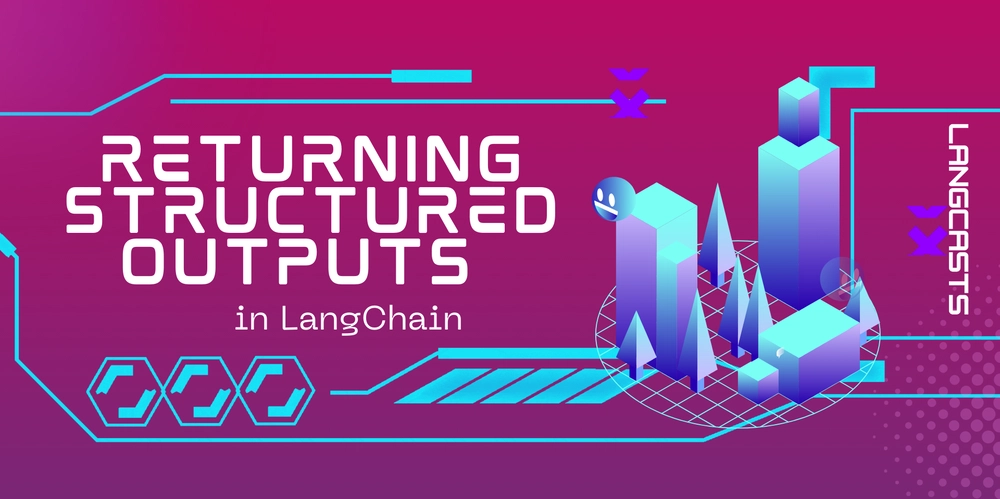Dependency Inversion Principle (DIP) in MuleSoft: Rely on Abstractions, Not Implementations
What is DIP? The Dependency Inversion Principle states that high-level modules should not depend directly on low-level modules; both should depend on abstractions. Additionally, abstractions should not depend on details; details should depend on abstractions. In the context of MuleSoft, this means designing flows and APIs that rely on interfaces or abstractions (such as System APIs or generic connectors) rather than specific implementations (like a database or legacy system). This approach reduces coupling between components and facilitates easier replacement or extension of functionalities. Why Is DIP Important for MuleSoft? Imagine your order system directly depends on a specific database (e.g., MySQL) to retrieve order details. If you need to migrate to another system (e.g., MongoDB or an external API), all flows connected to MySQL would need to be modified—violating DIP. This approach can lead to: High coupling: Flows become rigidly tied to a specific implementation. Low flexibility: Changes in the underlying system require modifications across all dependent flows. Expensive maintenance: Replacing or upgrading technologies becomes complex and risky. By applying DIP, we can design flows that rely on abstractions (like System APIs), allowing greater flexibility and easier maintenance. How to Apply DIP in the Order System? 1. Use System APIs to Abstract Underlying Systems Instead of directly accessing a database or internal system, create a System API that abstracts implementation details. The System API acts as an intermediary between the main flows and the underlying systems. Practical Example – Before (violating DIP): SELECT * FROM orders WHERE order_id = #[attributes.queryParams.orderId] Here, the flow is directly coupled to MySQL. Migrating to another system (e.g., MongoDB) would require modifying this flow. Practical Example – After (applying DIP): Now: The flow depends on the System API (system-api), which abstracts the underlying implementation. The System API can be updated to use another database or system without impacting consumers. 2. Centralize Configurations Using Shared Libraries or External Files Another way to apply DIP is by centralizing sensitive configurations (such as database connections) in shared libraries or external files. This prevents flows from being directly tied to specific configurations. Practical Example – Before (violating DIP): SELECT * FROM orders WHERE order_id = #[attributes.queryParams.orderId] Here, the connector is hardcoded into the flow. Changing credentials or migrating to another database would require modifying the flow. Practical Example – After (applying DIP): SELECT * FROM orders WHERE order_id = #[attributes.queryParams.orderId] Now: The database configuration (db.config) is managed externally (e.g., in a .properties file or shared library). Changes can be made without modifying the flows. 3. Use Generic Connectors to Reduce Coupling MuleSoft offers generic connectors, such as HTTP and Database, which can be dynamically configured for different systems. This reduces direct dependency on specific implementations. Practical Example – Dynamic HTTP Connector: Here: The variable vars.apiEndpoint can be dynamically configured based on the environment (e.g., development, production). The flow is not tied to a fixed endpoint. Summary of Applying DIP in the Order System Before: Flow directly connected to MySQL using the Database connector. After: Flow connected to a System API (order-system-api) that abstracts the database implementation. This approach: Reduces coupling between flows and underlying systems. Simplifies updates or replacements of backend systems without impacting consumers. Benefits of DIP in the Order System Flexibility: Changes in underlying systems do not impact main flows. Reusability: Intermediate APIs can be reused across projects and consumers. Simplified Maintenance: Centralized dependencies make updates easier. Checklist for Applying DIP in MuleSoft [ ] Do flows depend on intermediate APIs rather than direct implementations? [ ] Are sensitive configurations centralized in external files or shared libraries? [ ] Are generic connectors used to reduce coupling? Conclusion The Impact of SOLID Principles on MuleSoft Throughout this series, we explored how SOLID principles can transform a MuleSoft system into a more robust, scalable, and maintainable solution. Using the practical example of an order system, we saw how each principle addresses common challenges in integrations: SRP (Single Responsibility Principle): Simplified flows by separating responsibilities into dedicated subflo

What is DIP?
The Dependency Inversion Principle states that high-level modules should not depend directly on low-level modules; both should depend on abstractions. Additionally, abstractions should not depend on details; details should depend on abstractions.
In the context of MuleSoft, this means designing flows and APIs that rely on interfaces or abstractions (such as System APIs or generic connectors) rather than specific implementations (like a database or legacy system). This approach reduces coupling between components and facilitates easier replacement or extension of functionalities.
Why Is DIP Important for MuleSoft?
Imagine your order system directly depends on a specific database (e.g., MySQL) to retrieve order details. If you need to migrate to another system (e.g., MongoDB or an external API), all flows connected to MySQL would need to be modified—violating DIP.
This approach can lead to:
- High coupling: Flows become rigidly tied to a specific implementation.
- Low flexibility: Changes in the underlying system require modifications across all dependent flows.
- Expensive maintenance: Replacing or upgrading technologies becomes complex and risky.
By applying DIP, we can design flows that rely on abstractions (like System APIs), allowing greater flexibility and easier maintenance.
How to Apply DIP in the Order System?
1. Use System APIs to Abstract Underlying Systems
Instead of directly accessing a database or internal system, create a System API that abstracts implementation details. The System API acts as an intermediary between the main flows and the underlying systems.
Practical Example – Before (violating DIP):
doc:name="Fetch Order" config-ref="MySQL_Configuration">
Here, the flow is directly coupled to MySQL. Migrating to another system (e.g., MongoDB) would require modifying this flow.
Practical Example – After (applying DIP):
name="getOrderDetails">
method="GET" url="http://system-api/orders?orderId=#[attributes.queryParams.orderId]"/>
Now:
- The flow depends on the System API (
system-api), which abstracts the underlying implementation. - The System API can be updated to use another database or system without impacting consumers.
2. Centralize Configurations Using Shared Libraries or External Files
Another way to apply DIP is by centralizing sensitive configurations (such as database connections) in shared libraries or external files. This prevents flows from being directly tied to specific configurations.
Practical Example – Before (violating DIP):
doc:name="Fetch Order" config-ref="MySQL_Configuration">
Here, the connector is hardcoded into the flow. Changing credentials or migrating to another database would require modifying the flow.
Practical Example – After (applying DIP):
name="getOrderFromDB">
doc:name="Fetch Order" config-ref="${db.config}">
Now:
- The database configuration (
db.config) is managed externally (e.g., in a.propertiesfile or shared library). - Changes can be made without modifying the flows.
3. Use Generic Connectors to Reduce Coupling
MuleSoft offers generic connectors, such as HTTP and Database, which can be dynamically configured for different systems. This reduces direct dependency on specific implementations.
Practical Example – Dynamic HTTP Connector:
name="getOrderDetails">
method="GET" url="#[vars.apiEndpoint]/orders"/>
Here:
- The variable
vars.apiEndpointcan be dynamically configured based on the environment (e.g., development, production). - The flow is not tied to a fixed endpoint.
Summary of Applying DIP in the Order System
- Before: Flow directly connected to MySQL using the Database connector.
-
After: Flow connected to a System API (
order-system-api) that abstracts the database implementation.
This approach:
- Reduces coupling between flows and underlying systems.
- Simplifies updates or replacements of backend systems without impacting consumers.
Benefits of DIP in the Order System
- Flexibility: Changes in underlying systems do not impact main flows.
- Reusability: Intermediate APIs can be reused across projects and consumers.
- Simplified Maintenance: Centralized dependencies make updates easier.
Checklist for Applying DIP in MuleSoft
- [ ] Do flows depend on intermediate APIs rather than direct implementations?
- [ ] Are sensitive configurations centralized in external files or shared libraries?
- [ ] Are generic connectors used to reduce coupling?
Conclusion
The Impact of SOLID Principles on MuleSoft
Throughout this series, we explored how SOLID principles can transform a MuleSoft system into a more robust, scalable, and maintainable solution. Using the practical example of an order system, we saw how each principle addresses common challenges in integrations:
- SRP (Single Responsibility Principle): Simplified flows by separating responsibilities into dedicated subflows.
- OCP (Open/Closed Principle): Enabled extensibility by adding new functionalities without modifying existing flows.
- LSP (Liskov Substitution Principle): Ensured consistency in data formats across different types of orders.
- ISP (Interface Segregation Principle): Divided APIs into specific layers tailored to consumer needs.
- DIP (Dependency Inversion Principle): Decoupled flows from implementations using abstractions like System APIs.
Achieved Benefits
- Reduced complexity: Smaller, focused flows are easier to understand and debug.
- Simplified maintenance: Changes in one component do not impact other modules.
- Scalability: New functionalities can be added without breaking existing systems.
- Improved developer experience: Modular design accelerates onboarding and team collaboration.
Next Steps
To apply these concepts in your own MuleSoft projects:
- Audit existing flows to identify violations of SOLID principles.
- Modularize components using patterns like API-Led Connectivity.
- Centralize sensitive configurations using shared libraries or Object Store.




























![[Webinar] AI Is Already Inside Your SaaS Stack — Learn How to Prevent the Next Silent Breach](https://blogger.googleusercontent.com/img/b/R29vZ2xl/AVvXsEiOWn65wd33dg2uO99NrtKbpYLfcepwOLidQDMls0HXKlA91k6HURluRA4WXgJRAZldEe1VReMQZyyYt1PgnoAn5JPpILsWlXIzmrBSs_TBoyPwO7hZrWouBg2-O3mdeoeSGY-l9_bsZB7vbpKjTSvG93zNytjxgTaMPqo9iq9Z5pGa05CJOs9uXpwHFT4/s1600/ai-cyber.jpg?#)














































































































































![[The AI Show Episode 144]: ChatGPT’s New Memory, Shopify CEO’s Leaked “AI First” Memo, Google Cloud Next Releases, o3 and o4-mini Coming Soon & Llama 4’s Rocky Launch](https://www.marketingaiinstitute.com/hubfs/ep%20144%20cover.png)





































































































































































































![Rogue Company Elite tier list of best characters [April 2025]](https://media.pocketgamer.com/artwork/na-33136-1657102075/rogue-company-ios-android-tier-cover.jpg?#)







































































_Andreas_Prott_Alamy.jpg?width=1280&auto=webp&quality=80&disable=upscale#)





































































































![Apple Watch Series 10 Back On Sale for $299! [Lowest Price Ever]](https://www.iclarified.com/images/news/96657/96657/96657-640.jpg)
![EU Postpones Apple App Store Fines Amid Tariff Negotiations [Report]](https://www.iclarified.com/images/news/97068/97068/97068-640.jpg)
![Apple Slips to Fifth in China's Smartphone Market with 9% Decline [Report]](https://www.iclarified.com/images/news/97065/97065/97065-640.jpg)



































































































































